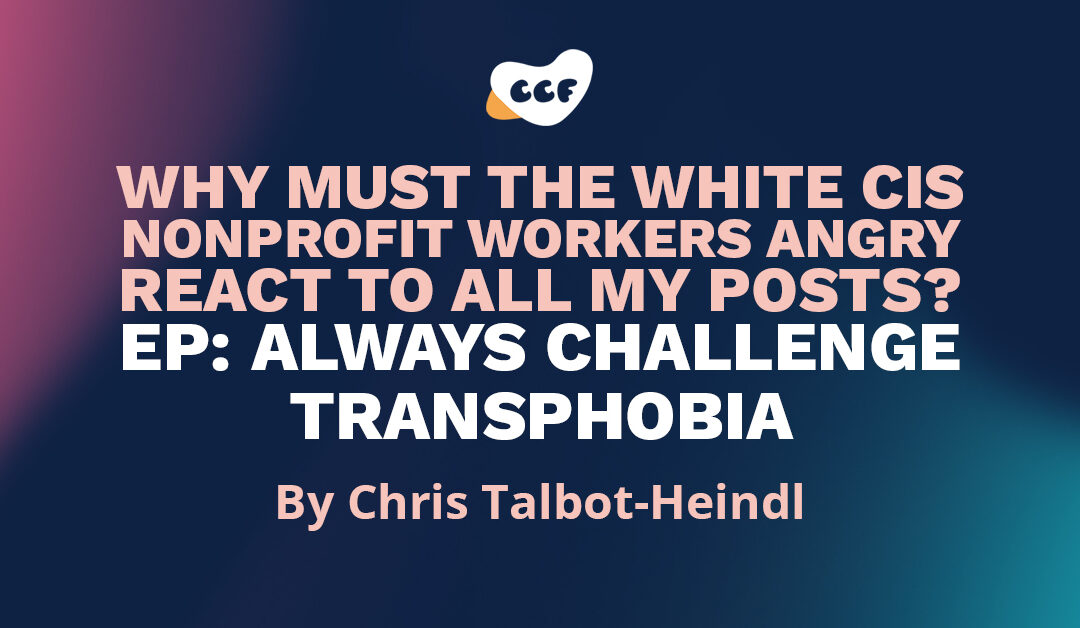By Chris Talbot, communications professional and educomics creator
Content warning: this piece is a reaction to the Club Q mass shooting. Please proceed with caution. If you are a member of the LGBTIQA2+ community and need some extra help processing this horrific attack, here is a list of licensed therapists who are either queer-identified or allies who are offering support services, lots of them free.
Go back to the infographic via this link
Introduction
Try as I might to focus on my day job two days after the mass shooting at Club Q in Colorado Springs, I can’t. I can only think about what I want my cisgender heterosexual friends, family, and coworkers to know about what it’s like to live in my skin. So rather than continue to struggle against that feeling, I’m taking the time I need to make this educomic to talk about what I feel is the root cause of violence like this. And it’s things that we all let slide on a daily basis.
I’m going to start with the time I answered a question from a white cishet fundraiser about a donation they received with a transphobic note attached to it. This was the second donation with a transphobic note they received; the first being returned with an explanation that they were a trans-affirming organization. Other white cishet fundraisers were telling her to just ignore the behavior.
First Section
There’s an illustration of a middle-aged cis white man. He says “When I had a transphobic donor, I just ignored them and found that their gifts disappeared on their own.”
There’s an illustration of me looking quizzical with my bottom lip tucked in to my teeth. A thought bubble above my head says “And how many people inside of outside of the organization suffered because of it?”
In the next cell I’m speaking and saying, “Those comments are harmful and I would continue sending the donations back. Ignoring transphobia is accepting transphobia.
The fifth cell shows a screengrab of an article with the text “A Reuter’s special report: A gender imbalance emerges among trans teens seeking treatment. Adolescents assigned female at birth account for a significant majority of minors receiving gender-affirming care, including top surgery, fueling debate about the influence of peer groups and social media.” Text says “Friday: misleading and fear-mongering article about trans boys in Reuters”
The sixth cell shows the Club Q logo. Text says “Saturday: in a hate-crime, a shooter opens fire, killing 5 and injuring 18 at Club Q, a club known for drag shows, including all-ages shows. All-ages drag events have become a target for transphobic right-wing groups, which they equate with ‘grooming.” It’s a disgusting (and recycled) attack that has no basis in reality, but has exponentially increased the attacks against trans people and other members of the queer community by association. There’s a clear connection between rhetoric of the homophobic and transphobic right being normalized and presented as one of the two sides of a ‘debate’ and the increase in violence.”
The seventh cell shows a tweet from Libs of TikTok. The tweet has a collage of drag related content. Text says “This organization in Colorado teaches kids how to become drag queens and helps kids ‘safely experience the art of drag on stage.’ Colorado state reps @leslieherod and @BriannaForCO promoted and encouraged this child drag organization and performance.” Text says “Sunday: hours after the shooting, Libs of TikTok creator, Chaya Raichik, posts about another Colorado organization that supports kids who want to learn drag as well as an out lesbian Representative and an out trans Representative, knowing full well that people and locations she blasts have become the target of violence (including Boston Children’s Hospital).”
Conclusion
Text says “When governments are the media are anti-trans, any transphobia you let slide harms us. You need to challenge those sentiments wherever they show up. Because it’s not just individuals. It’s not just Katherine who sent the transphobic note or Jeanne who said transphobic things on the phone call. It’s an entire society that needs to be told differently. So the next time something transphobic happens at your workplace, listen and take the lead from the trans folks in your organization, regardless of the energy cost to you or the dollar amounts of the donations you’ll need to turn away.
I’m happy to say that since these incidents, the team I work with has become more understanding of both the need to challenge transphobia when it shows up and the need for communal healing after a hate crime like the one that happened on Saturday. Instead of having to drag myself to work, I read the words of my accomplice, reminding me that I didn’t have to come in and I could take health and wellness leave to process my feelings.
And so I made this educomic instead.”
Text at the bottom says “All illustrations of people, besides me, are far from the actual appearance of the people involved. Any physical likeness to any actual people you know and work with is purely coincidental.”

Chris Talbot
Chris Talbot (they/them) is a queer, trans nonbinary, mixed-race artist, activist, and nonprofit employee. When they aren’t working the day job, they spend their free time editing art and literature magazines, writing and illustrating educomics to help folks affirm their nonbinary pals, creating a graphic novel to describe what it’s like to be nonbinary in a gender binary world, cuddling their cat, and quad skating in the park.
You can find Chris at talbot-heindl.com, on LinkedIn, Instagram, Bluesky, and Twitter — and tip them on Venmo or PayPal or join as a patron on their Patreon
Discover more from CCF
Subscribe to get the latest posts sent to your email.

